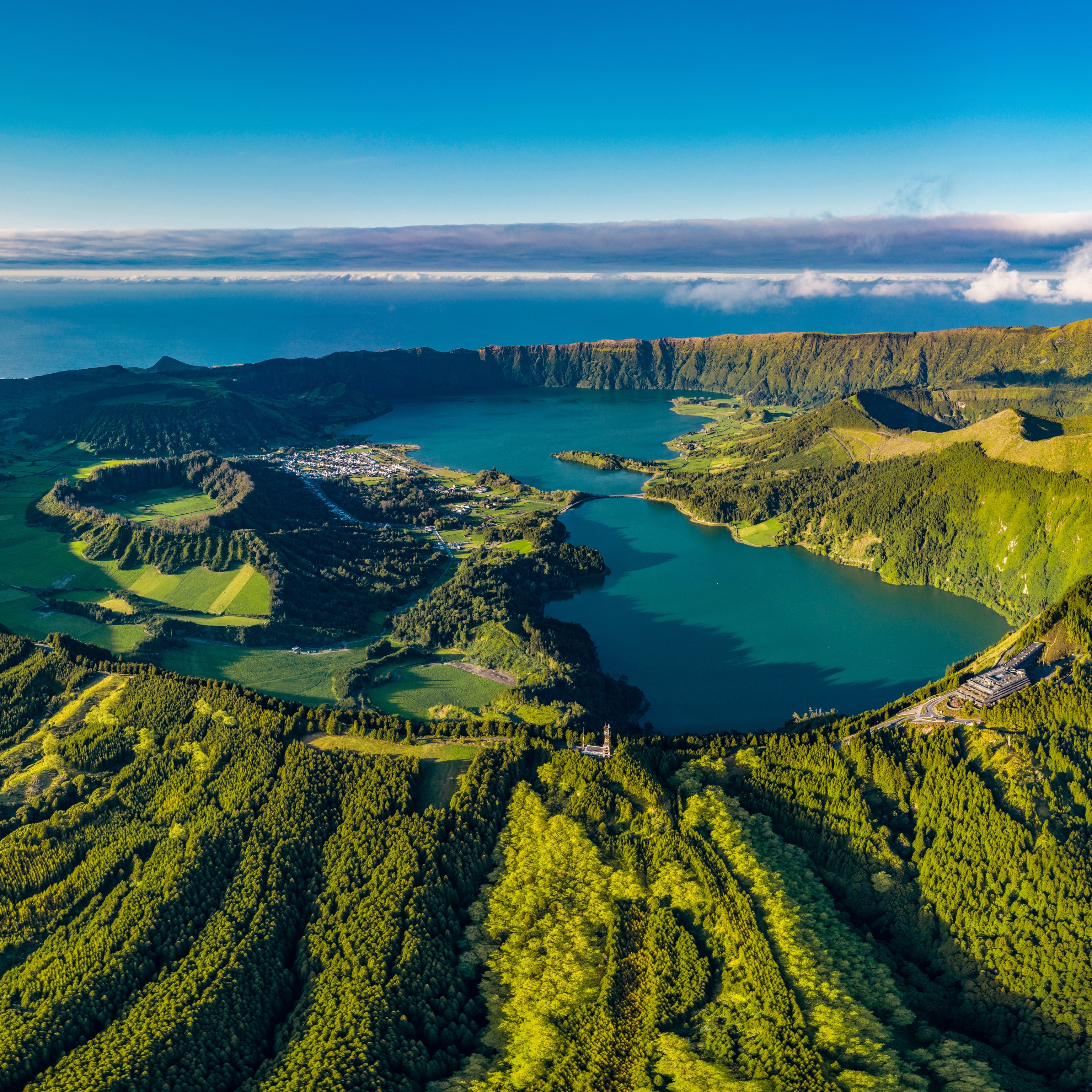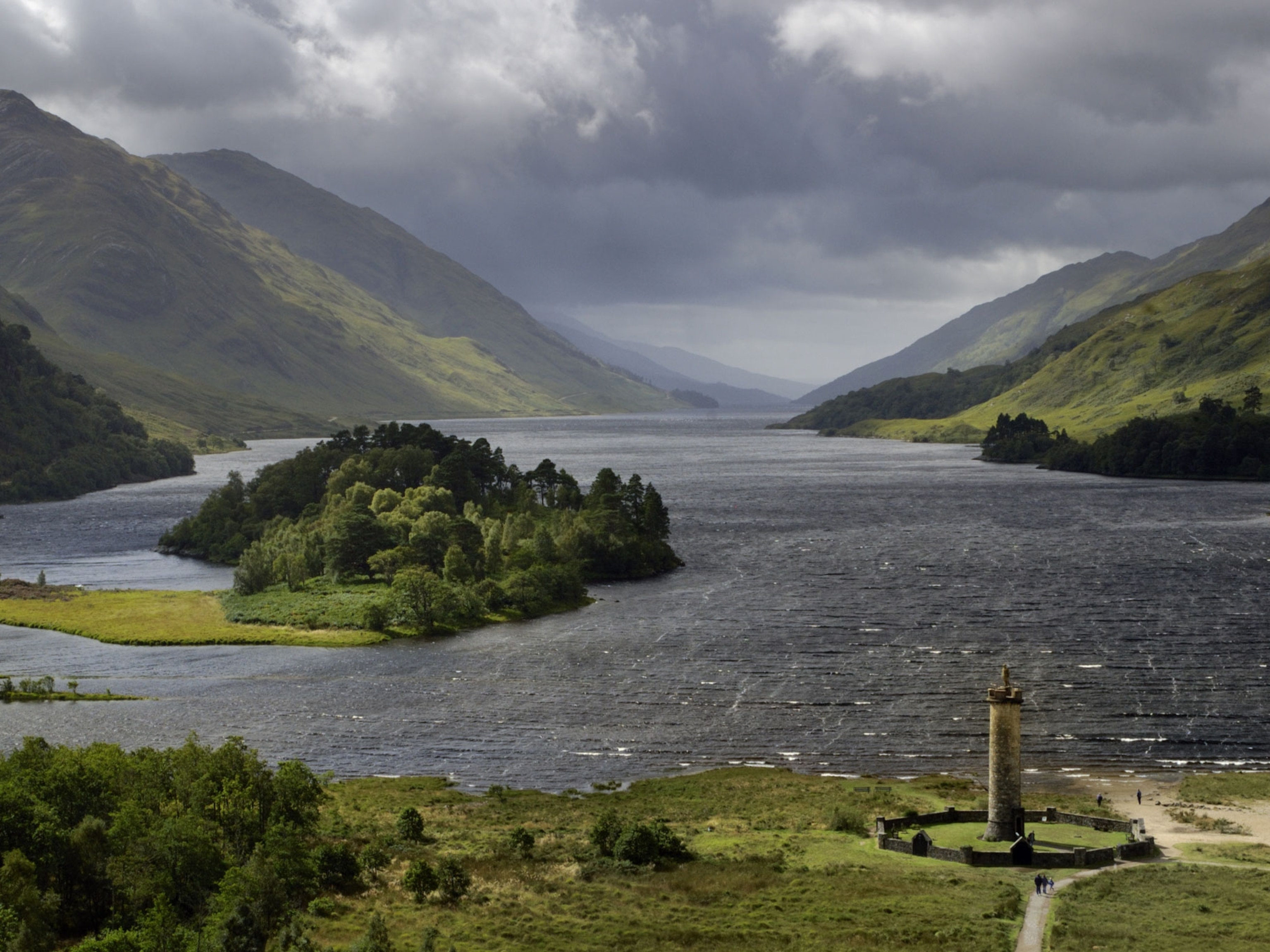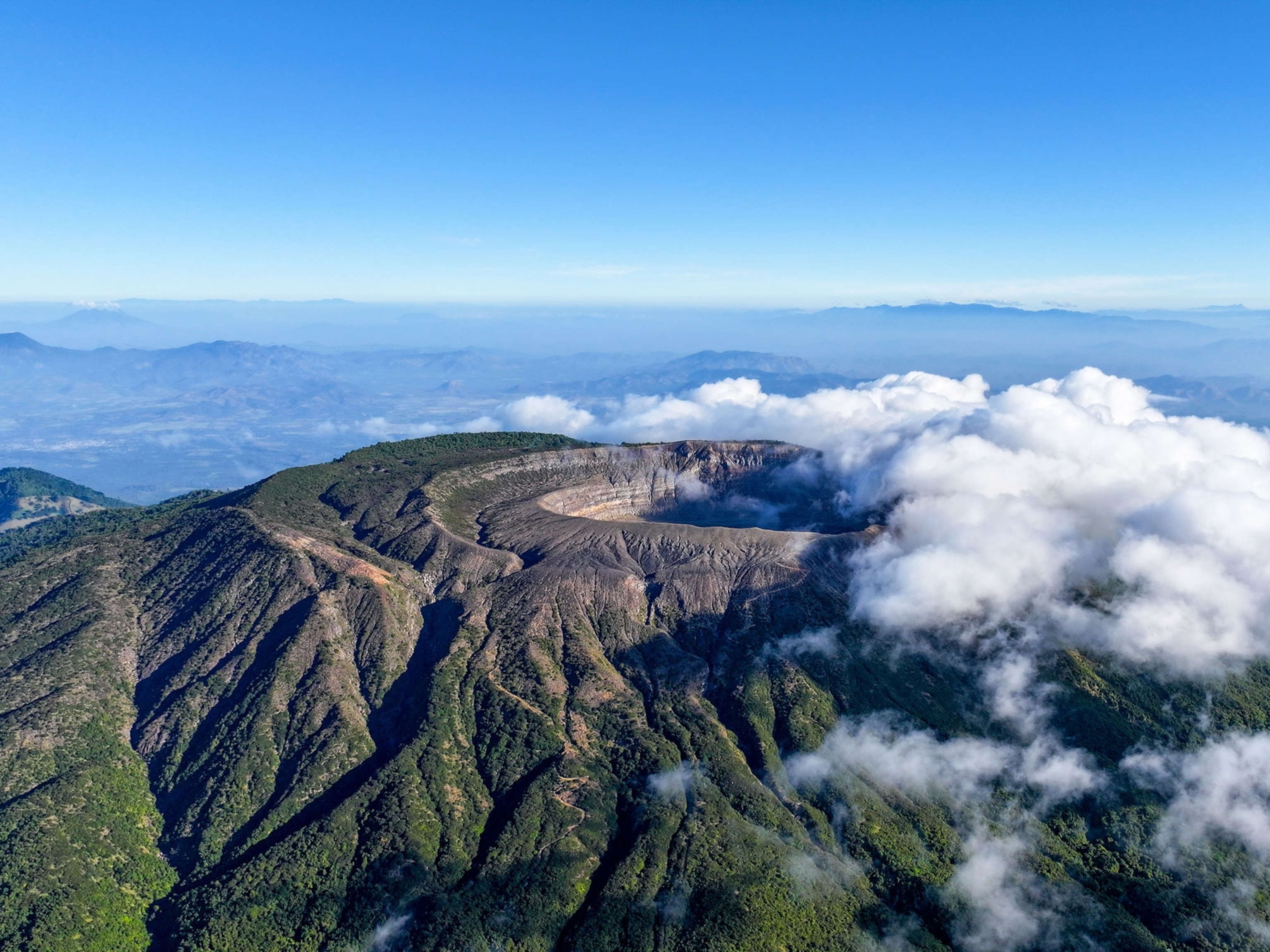
Explore Norway's wild landscapes
This pristine countryside is peppered with endless waterfalls, towering cliffs, and coastal Viking burial grounds.
Long before Norway was named one of the happiest places on Earth by the United Nations, travelers have been humbled by its powerful natural realm.
In this land of the midnight sun, where the country’s total population is less than New York City’s, you can have the seemingly infinite wilderness all to yourself while hiking, biking, and paddling.
I came to Norway to take in the fjords and experience epic natural landscapes, but I found much more than that—a sense of a freedom in a place that values peaceful time in the wild outdoors. To pull off your own inspiring trip, make Bergen your basecamp then make your way through its protected countrysides.
Hike and zipline on Bergen’s tallest mountain

The higher I climb Mount Ulriken, up the steep footpath edged with massive Sitka spruce and Scots pine, the more connected I feel to Bergen, a town where locals choose optimism, make nature their church, and treasure brown cheese. With each rough-hewn step, I can sense Bergen’s sacrosanct stretch of Seven Mountains, fjords, ocean, and idyllic red-roofed timber houses rising above the line of trees behind me. Here, people belong to the outdoors and not their desks; it’s a vigorous lifestyle rooted in the Viking Age (or maybe it’s just the strong Kokekaffe).
After more than an hour and two vertical miles on the Ulrikseggen trail, I reach a stunning vista and the Mount Ulriken zipline at 2,109 feet. Opened in July 2017 and operated by local outfitter Norway Insight, this little-known attraction offers big thrills and zero crowds. Flying 1,000 feet above Bergen, you’ll pass over the dramatic expanse of this "Gateway to the Fjords.”
While there, consider hiking the popular 12-mile Vidden Trail between Mount Fløyen and Mount Ulriken or walk a short distance to Sky:Skraperen for bites and brews with the best city views. Under the new direction of talented local chef Anders Rødseth Isager, the eco-conscious restaurant has become as much a destination for the unparalleled panorama as for its mountain-inspired plates, like the Fjellburger on ancient purple wheat bread paired with an Ulriken Double IPA from Bergen-based 7 Fjell Brewery. The Ulriken Cable Car, which departs every seven minutes May through October, will get you smoothly back to town.
- National Geographic Expeditions
Paddle the largest fjord in Norway
To get up close to the largest and deepest fjord in Norway, you must take a famously beautiful train ride three hours northeast from Bergen to Flåm, put on a wetsuit and lifejacket and make peace with imminent rain. Among the country’s most inviting tableaux, the Sognefjord runs 127 miles from the Atlantic Ocean to the small village of Skjolden and is best explored at the pace of a sea kayak. Experience the “King of the Fjords" on a three-hour Fjord Paddle tour with Njord, which first introduced the Leave No Trace philosophy to Western Norway in the early 2000s with the help of California transplant and expeditions manager Ervin Mejía, who is my guide on this drizzly spring Sunday.
With the exception of a few passing ferries, there’s an uncanny calm to the Sognefjord as we dip our oars into the cold, salty water. Because cruises and boat excursions are the most popular way to sightsee, kayakers often enjoy unexpected one-on-one time with this seductive channel of endless waterfalls, towering cliffs, and coastal Viking burial grounds. While sharing his rich knowledge of Norwegian culture and history, Mejía points to these sacred mounds of rock, where aspen trees have naturally sprouted as if the earth is honoring the legacy of the ancient Norse seafarers.
Though it may be tempting to constantly open the dry bag and grab your camera, you’ll have plenty of fjord photo ops on the five-hour Norled cruise back to Bergen. If ever there was a moment in Norway to disconnect from technology and be present, this is it. Before boarding, stop at the Ægir BrewPub in Flåm for a “Viking plank” of five craft beers.
Explore Norway’s backcountry
Ortnevik is a tiny village tucked into the south side of the Sognefjord, two and a half hours north of Bergen. It’s where I find myself standing next to a massive tank filled with halibut at Sogn Aqua, the world’s first sustainable land-based aqua farm, talking to Andre, one of 35 residents. “You can see the change in the village because of the farm. People are coming back, building houses, starting a new life,” says Andre, who constructed the wooden fence around the fish farm and remembers when the town was bustling with 150 people many decades ago. “I’m proud that this farm is happening in Ortnevik. We want to help Sogn Aqua be a success. The whole village will disappear if it isn’t.”
Beyond the expansive hillsides, dappled with grazing horses, red barns, and white houses, lie snowcapped mountains—and not much else. For Norwegians, sometimes nature is everything. Still, I’m tempted to ask what locals do for fun. Retired from cattle farming, when Andre isn’t building churches or aqua-farm fences, making sculptures with a chain saw, or playing the organ, he’s hiking in the Stølsheimen Nature Preserve. “Ut på tur aldri sur,” the burly 75-year-old says to me with a big grin. “Out for a hike never sour.” Then Andre tells me about allemannsretten, or the “right to roam" edict, and I feel like I’ve been given a sacred key few tourists know exist.
According to the Outdoor Recreation Act of 1957, anyone can access, explore, and camp on uncultivated public land across Norway for free. As it turns out, I’ve landed in one of the most spectacular remote hiking areas, capturing the true privilege of allemannsretten. If you’d rather not pack a tent, turn to the Norwegian Trekking Association (or DNT), which operates 550 cabins, as well as 12,000 miles of marked walking trails and 4,000 miles of ski tracks. One of them, the 30-room waterfall-perched Solrenningen, is located an eight-hour trek from Ortnevik.
If you’re planning hut-to-hut excursions, it’s worth paying the $86 DNT membership fee to get a discount on cabins. At Solrenningen, for instance, members pay $32 and non-members pay $46 per night. Sogn Aqua’s co-founder Jan Arne Brekke recommends resting up and soaking in the hot tub at Ortnevik’s own Brekke Cabin before setting off into Norway’s wild backcountry.
Bike to a hidden island near Bergen
Norway’s mountain-studded landscapes are everything an ardent cyclist could hope for, but it’s only in the last few years that a warming climate and exciting bike initiatives (like a new billion-dollar network of cross-country bike highways) have sparked a cycling movement.
Starting in either Bergen or Oslo, one of the most popular rides is the Rallarvegen route. It follows the historic Bergensbanen railway lines for roughly 50 miles, passing fjords, glaciers, and blooming valleys. Looking for some solitude, I’ve opted for a cycling paradise 30 minutes outside Bergen. Riding a hybrid bike on Norway Insight’s new Into the Fjords overnight tour, I don’t have to share my path with anyone but goats. The route starts just over the Osterøy Bridge—which quickly feels like a gateway to a place lost in time. I coast up and down one main road for 14 miles, in total harmony with the fjordscape. There are no cars, cruise ships, airplanes, or modern-day interruptions. After a barrage of rustic charm, verdant highlands, and forest-scented air, I realize my face hurts from smiling.

Osterøy is a world untouched by tourism, something locals want to change. I’m on my way to meet Eivinn and Eleana, who run a farm named Klyvvikje that has been in their family for over a hundred years. Dressed in their finest traditional Bunad outfits, the couple tells me they’re proud of the island’s beauty and heritage, which is why they’ve partnered with Norway Insight and spruced up their sprawling homestead into a glamping oasis for hygge seekers.
There are adorable baby goats, a private crescent beach on the fjord, and activities like canoeing, tree swinging, archery, and axe throwing (which is surprisingly stress-relieving). Guests are treated to generous bowls of homemade lapskaus stew and a sweet flatbread called lefse. The day ends with stories of Norwegian folklore around the campfire and a restful night’s sleep in a Scandinavian lavvu teepee.
The third portion of Norway Insight’s tour features a five-hour hike up nearby Mount Brøknipa, where the sweeping views at 2,700 feet make a compelling case for keeping Osterøy a secret just a little bit longer.






